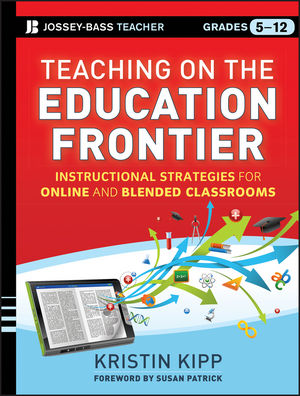Over the last two months, teachers all over the world have gotten a crash course in teaching in a fully online environment. As I reflect back on the first time I taught online (circa 2008), I remember likening it to being a student teacher again. Everything seems overwhelming, everything is new, and every day brings significant challenges. If you’ve felt that way over the last two months, please know it’s normal and perhaps even expected.
However, I also remember being surprised by how much remains the same in an online classroom. Many of my skills as a face to face (f2f) teacher did transfer online, though they had to be translated through a digital tool. Perhaps you’re experiencing the same? Though teaching in this online space during a pandemic has been scary and overwhelming, I hope we can each cling to what remains the same–the ways that we support students in learning.
Below is a brief list of what remains the same when a teacher moves online from a f2f classroom. As we continue this online experiment (perhaps into the fall?), I hope this list can help us each to cling to what really makes a difference in being an educator, in any format.
- Students: All teaching in any format must first start with learners. Caring about students means understanding them as individuals, encouraging them in their struggles, and marveling at their accomplishments. Though it may be mediated through a text message, email, or phone call, caring about kids is still our first priority.
- Planning: The planning process f2f and online really should look very similar. First, we start with what we want students to know and do. Then, we figure out how we want them to demonstrate that learning (quiz, project, essay, etc.). Finally, we design experiences that will help them accomplish those goals. Though the “design experiences” part looks different online with videos, readings, and explorations replacing lectures and classroom experiences, the process is really much the same.
- Grading: My grading for f2f courses and online courses is a very similar process. Students submit work, and I have to figure out how to communicate their progress in a meaningful way. F2f perhaps that looked like red pen marks on paper. Online it may look like text markups or voice recordings with feedback, but the end result should be the same. Students need a clear understanding of how they are performing, communicated in a way that both encourages and challenges them.
- Collaboration: The best teaching happens in collaboration. While an online teacher is not right down the hall from colleagues, there should still be in-depth collaboration. Conversations, texts, and emails step in to help us connect to each other and share best practices.
I realize this list only tackles some of what a teacher does, but I do think that it captures the essence of much of our daily work. Though living in an online space can be overwhelming, perhaps each of us can be encouraged by what we already know, realizing that many of those skills will transfer directly online.
As you reflect on the last two months, what’s the “same” and what’s “different” in remote teaching and learning? I hope you’re encouraged in realizing that many things remain the same and that it is indeed possible to be an authentic and effective teacher online.

One thought to “Remote Teaching vs. F2F Teaching–finding our core”
I am a teacher who is planning to start online teaching. And your article encourages me to be brave to take this step (finally!!) As the piace of work shows that there are some same spheres in both teaching styles.
thanks a lot.